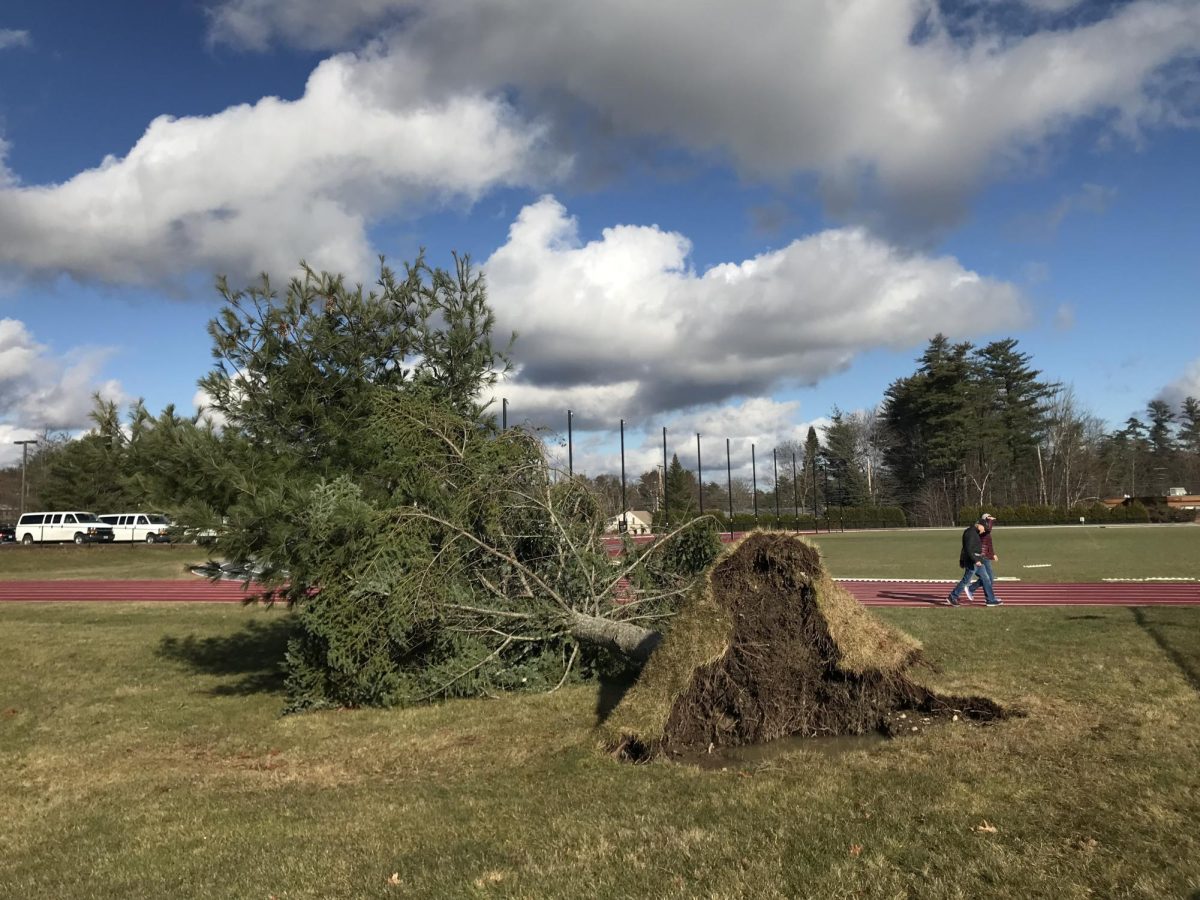2023 saw an alarming rise in temperatures, the year having the hottest average surface temperature on record since 1850, according to NOAA’s National Centers for Environmental Information.
The most recent snowstorms on Jan. 10 and 13 had the greatest impact on the coast. Videos taken by residents show familiar Portland and Peaks Island locations unrecognizable due to the sheer mass of water on top of the streets.
The peak storm surge hit right as the monthly highest high tide peaked, resulting in record-breaking tides. On Jan. 10, Portland recorded the third-highest tide in its history, and on Jan. 13, Portland’s high tide record was broken. The tide measured around noon was about 14.5 feet (4.42 meters) above average low tide, the highest recorded in Portland since 1912.
These storms were unique, controlled by wind coming from the southeast (rather than the northeast) which affected areas infrequently impacted by storms. Places like Popham Beach and Fort Popham were wrecked, with sand obscuring the road and dunes being swept away.
These storms are not the only ones within the month. This winter, Maine has had storm after storm that have decimated historical records, destroyed homes and property, and left many people without a home during the coldest months of the year.
Right after finals week on Dec. 18, Lewiston and other inland towns saw a powerful storm. Lewiston received 3.87 inches (9.82 centimeters), but towns to the west received over five inches (12.7 centimeters). The wind speed ranged from a high of 93 mph recorded in Trescott (150 kilometers per hour)) to 60 mph (96 kilometers per hour)) on average. The aftermath led to mass state-wide power outages, two deaths and major flooding. The impact was so significant that Governor Mills declared a State of Civil Emergency to allocate funds and resources to assist and support recovery efforts. The storm dealt at least $20 million in public infrastructure damages.
All these devastating and historic storms have rekindled conversations surrounding the alarming change in winter weather this season, showing Mainers what life with rising sea levels could look like with the current coastal infrastructure.
What could this mean for Bates?
As more energy gets added to the global climate system from the greenhouse gas effect, large record-breaking storms like these are only going to happen more.
This coastal sea level rise will impact the Bates-Morse Mountain Conservation Area, a 600-acre (2.4 square kilometer) plot of coastal uplands and salt marshes that Bates operates in Phippsburg, ME. The storms and sea level rise attributed to climate change will erode the dunes and other important physical features, leading to a large habitat loss for endangered species.
Several students from Maine have experienced these climate changes firsthand in the areas they live in.
“I heard there was a ton of flooding in Camp Ellis which is part of my hometown in Saco. Lots of my friends lost power,” Chase Buzzell ‘25 said.
As these storms erode the essential coastal habitats that naturally combat storm surges, they will have increasing effects on cities like Portland which are situated in areas of low elevation.
With these environmental changes come the disparities in how climate change affects people with socioeconomic inequalities, especially BIPOC people. Lewiston will also see these issues with cheaper housing being more susceptible to damages from climate change.
Concerns regarding the fishing industry arose after storms destroyed many piers, boats, historic fishing shacks and docks along the coast. Most of these fishing businesses are locally owned and might face financial difficulty in fixing damages from frequent storms. The Maine Climate Council is scheduled to have an emergency meeting with Governor Mills on Jan. 23 to hear from members of impacted communities, climate experts and first responders.
The fast-rising average ocean temperatures along the Gulf of Maine further contribute to the seriousness of the issue. In response, more businesses and governments are pledging carbon neutrality to combat climate change, with some even turning to natural solutions.
Professor of Earth and Climate Sciences Beverly Johnson is currently researching the utilization of carbon cycling within Maine’s Blue Carbon ecosystems as a method for mitigating the effects of climate change.
She believes we are on a “precipice of change climatically and also culturally. We have to make decisions on how we need to increase resilience in our coastal communities.”
While reducing fossil fuel emissions is the first step towards addressing climate change, one useful step is to protect or build salt marshes along areas more susceptible to its effects.
Professor Johnson explained that, “A healthy salt marsh can capture 10 times more carbon than forests and act as a buffer against erosion. [The salt marshes] act as a big sponge sitting between the ocean and the land.”
It will take time to implement these changes, but Professor Johnson is still hopeful.
“There’s this overwhelming feeling among your generation that we screwed it up and are leaving it to you to fix. While it might feel like it might land on you, you’re not alone. There’s people here to help,” Professor Johnson said.










Judith Marden • Feb 1, 2024 at 9:09 PM
Any news of the storm’s impact at Morse Mountain?
(Judy Marden ’66, former Director)